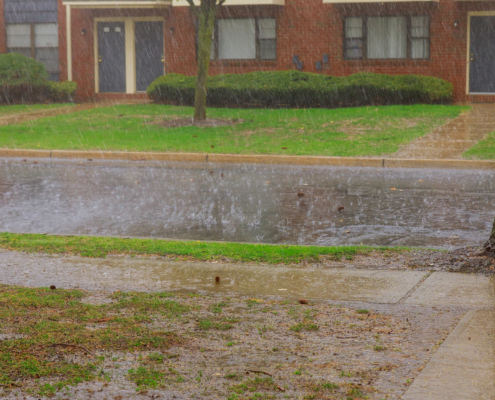
Climate Change and Insurance: What Commercial Property Owners Need To Know
If you own or manage buildings in the Midwest, you have probably noticed two things. Storms feel less predictable, and renewals feel less predictable too. Hail this week, freeze next week, heavy rain that overwhelms drains the week after. Carriers are recalculating risk in real time, and that shows up as tighter terms, higher deductibles, and closer scrutiny of how your property performs in bad weather. This guide connects the dots between weather patterns and the decisions underwriters make, so you can protect your assets and your budget with a clear plan.
How Climate Change Is Reshaping Commercial Property Insurance
Across the interior states, weather is swinging wider and faster. Insurers are not debating the cause at renewal meetings—they are looking at loss trends and asking how to price the next claim.
More frequent inland extremes.
The Midwest is seeing more hail bursts, high straight-line winds, flash flooding, and faster freeze–thaw cycles. None of these are new on their own. What’s new is the pace and the clustering. The result is more stress on roofs, facades, drainage systems, and mechanicals.
Aggregated losses drive pricing.
When carriers pay more and pay more often, they adjust appetite and price to keep their books healthy. They also ask for better documentation that a property can handle local hazards, especially wind and hail damage.
Rebuild costs amplify the problem
Materials and labor remain elevated. A roof claim that might have been manageable five years ago can now cost much more, which forces underwriters to guard the portfolio.
In plain terms, commercial property insurance is being priced for performance. That means your maintenance, upgrades, and documentation matter as much as your loss history.
Property Insurance Trends in a Changing Risk Landscape
Even when your building has not had a recent claim, market rules still apply. Here’s what owners and landlords are seeing on the ground.
Higher, Targeted Deductibles
Hail and wind deductibles are rising in counties with frequent severe weather. Percentage deductibles by location, roof type, or construction class are becoming more common. This does not mean you are uninsurable—it means you are expected to absorb smaller, likely losses and insure for the larger ones.
Flood Zone Updates and Inland Reclassification
Flood maps evolve. Properties that never needed separate flood coverage may now sit in zones where lenders or carriers want more evidence of elevation, drainage, or barriers. Expect requests for photos, site plans, and invoices for mitigation work.
Underwriting Focus on Specific Building Features
- Roof age, condition, and slope: Low-slope roofs with older membranes face additional questions.
- Exterior drainage and grading: Downspouts, scuppers, and runoff patterns receive sharper scrutiny.
- Snow load and ice management: Structural integrity and maintenance logs help in colder counties.
Owners who can show documented maintenance and recent improvements tend to secure better outcomes when the discussion turns to limits and exclusions. This is where the conversation about climate change and insurance becomes real. Better evidence leads to better terms.
Want a fast read on how your buildings would score today? Book a 20-minute review with NEC Insurance. We’ll assess roof condition, drainage, statements of values, and endorsements, then map options to keep coverage competitive without overpaying.
What This Means for Commercial Property Owners
The old rule of thumb—that a clean loss run guarantees a smooth renewal—no longer tells the whole story. Loss-free helps, but it’s not the only lens.
Expect renewal variability.
After a local storm season, even properties without claims can encounter upward pressure. Carriers use regional loss data, not just individual building data, to set portfolio targets.
Be ready to answer new questions.
Underwriters want to know whether rooftop equipment is anchored, whether HVAC units are elevated above pooling areas, and whether roof coverings meet hail impact ratings appropriate for your county. If your documentation is thin, pricing often reflects uncertainty.
Older buildings face a tighter appetite.
A 20-year-old roof with patchwork repairs might still function in typical weather, yet it looks riskier to a carrier who is modeling today’s storm frequency. The answer is not always replacement. Sometimes it’s an inspection and a staged plan that you can present with photos and dates. That shifts the conversation from unknown to known.
A practical way to view climate change and insurance is this: more variables are in play, so you need more preparation to keep the negotiation centered on your strengths.
Strategies to Maintain Insurability and Control Costs
You can’t control the regional forecast, but you can control how your property performs and how you present it to the market.
Invest where the modeling cares.
- Impact-resistant roofing that aligns to your hail zone rating.
- Perimeter drainage that moves water away from foundations and entry points.
- Snow and ice plans that show roof load awareness and ice dam prevention.
- Elevated or curbed rooftop units with hail guards where appropriate.
Prove it on paper.
Updated appraisals, roof reports, infrared scans, and maintenance logs all change how underwriters view your site. Photos of recent work and invoices for materials are simple, persuasive artifacts.
Tune deductibles instead of just adding premium.
If your cash flow allows, consider a higher wind or hail deductible paired with stronger building income or ordinance and law limits. The right balance reflects your actual risk tolerance.
Coordinate coverage, not just price.
Make sure flood, equipment breakdown, and business income definitions fit your operations. Many claims are chains of events. Aligning forms can prevent a denial or delay when you need speed.
Work with a broker who speaks both languages. You want someone who understands local weather patterns and zoning rules, and who can translate your upgrades into the language underwriters use. When you do that, the negotiation is about data, not generic class codes. This is where a broker like NEC adds value—because climate trends change, and the file must change with them.
The quick takeaway: treat climate change and insurance as a project you manage, not a bill you receive.
Regional Examples Owners Can Relate To
Not every property faces the same exposure, even inside one metro area. Here are common patterns we see and how to address them.
Hail-belt suburbs with large roof footprints.
Distribution centers and retail boxes with wide, low-slope roofs are prime targets for hail and ponding. Strategies that help include impact-rated coverings, regular seam checks, and prompt patch documentation after any weather event. Presenting a roof plan with marked repair dates changes the tone of your renewal.
Older urban infill with mixed drainage.
Historic structures often have unique runoff paths and limited room for grading changes. Camera inspections of internal drains, gutter replacement schedules, and thermography to catch hidden moisture can offset carrier concerns.
Light industrial near creeks and retention basins.
Small rises in water levels can translate to pooled parking lots and wet mechanical rooms. Elevating electrical components, adding backflow prevention, and showing a flood response protocol improve insurability, even outside mapped high-risk zones.
Office and medical with sensitive interiors.
When a minor leak creates major interior damage, business income and extra expense coverage become critical. Underwriters will want to see ceiling tile replacement logs, HVAC service records, and a plan to protect clean rooms or imaging suites.
In every case, owners who bring evidence win better discussions. The market rewards visible preparation.
Compliance and Documentation: The Quiet Differentiator
A surprising number of renewals falter because simple documents are missing. You can fix that before it costs you leverage.
- Keep statements of values current: Use realistic replacement costs. Understated values can trigger coinsurance penalties. Overstated values can waste budget that belongs in endorsements and limits.
- Store inspection and service records in one place: Roof, HVAC, electrical, and life safety reports should be organized and time stamped. Quick access matters when underwriters request proof.
- Map your property features: A one-page diagram that shows roof sections, scuppers, drains, and rooftop equipment tells a clear story. Pair it with photographs and you have a persuasive underwriting package.
This is the behind-the-scenes work that allows your broker to negotiate smarter terms in a market shaped by climate change and insurance realities.
Climate Risk Is Now a Local Concern
You don’t need a coastal postcode to feel climate pressure. Midwestern owners are living it, line by line on their policies. Underwriters are asking how your building holds up under a hail cell, how quickly your lot drains after two inches in an hour, and whether your roof can handle a wet, heavy snow. The right response is not to worry. The right response is a plan.
Action checklist:
- Walk the roof and site with a camera twice a year and after big storms.
- Schedule an independent roof inspection and keep the report.
- Audit drains, downspouts, and grade for flow, not just appearance.
- Update your statement of values with current costs and square footage.
- Review business income and ordinance or law limits with your broker.
- Document upgrades. Photos, invoices, and dates matter.
Owners who do these six things are better positioned to influence outcomes, even when the broader market is conservative.
Put NEC Insurance On Your Weather Strategy Team
You want fewer surprises, lower volatility, and a program that works when you need it. NEC Insurance brings carrier access and local insight to help you navigate climate-driven insurance challenges without overpaying. We translate site conditions into an underwriting story, align forms across property and supporting coverages, and negotiate deductibles and limits that fit your cash flow. When a storm hits, we stay close on claims so repairs and reimbursements move faster.
Ready to see how your portfolio stacks up? Contact NEC Insurance for a practical review that turns preparation into pricing power.
Share This Post


About Us
NEC Insurance supports Missourians with high-quality coverage for businesses and individuals. We apply over 45 years of experience to help you navigate the market and deliver the policies you deserve.








